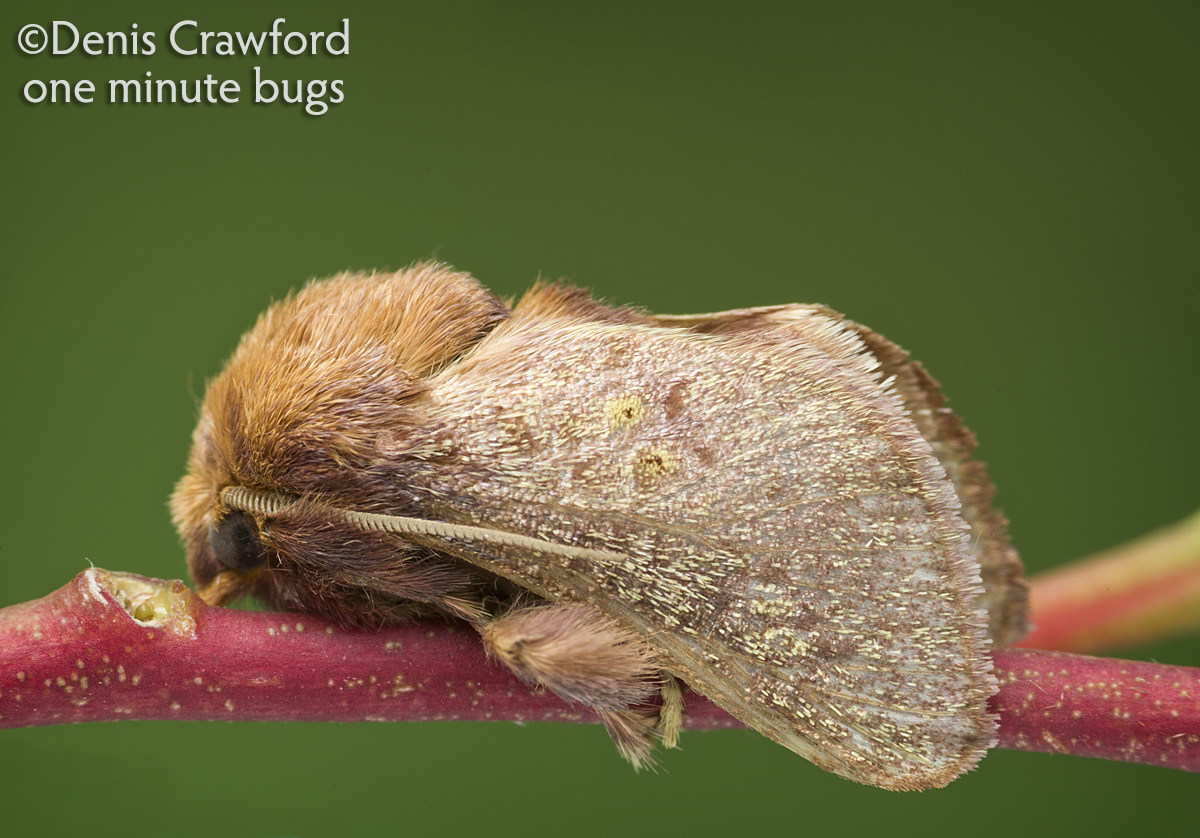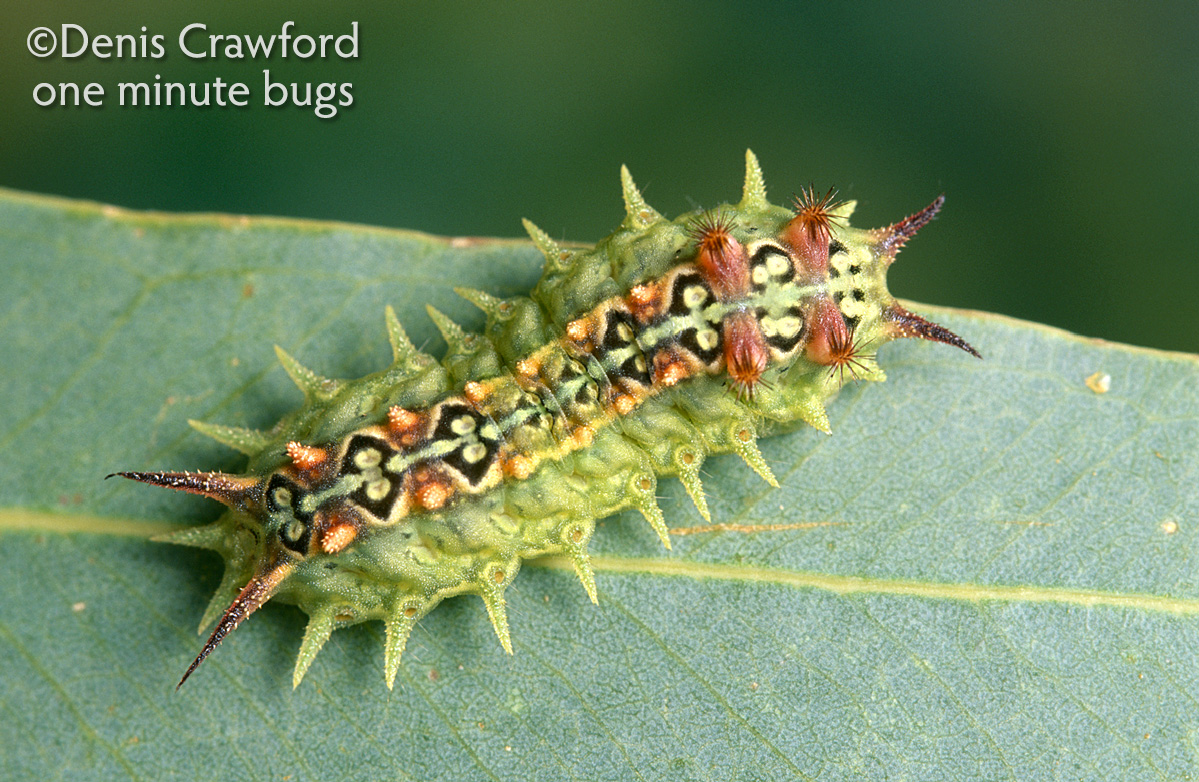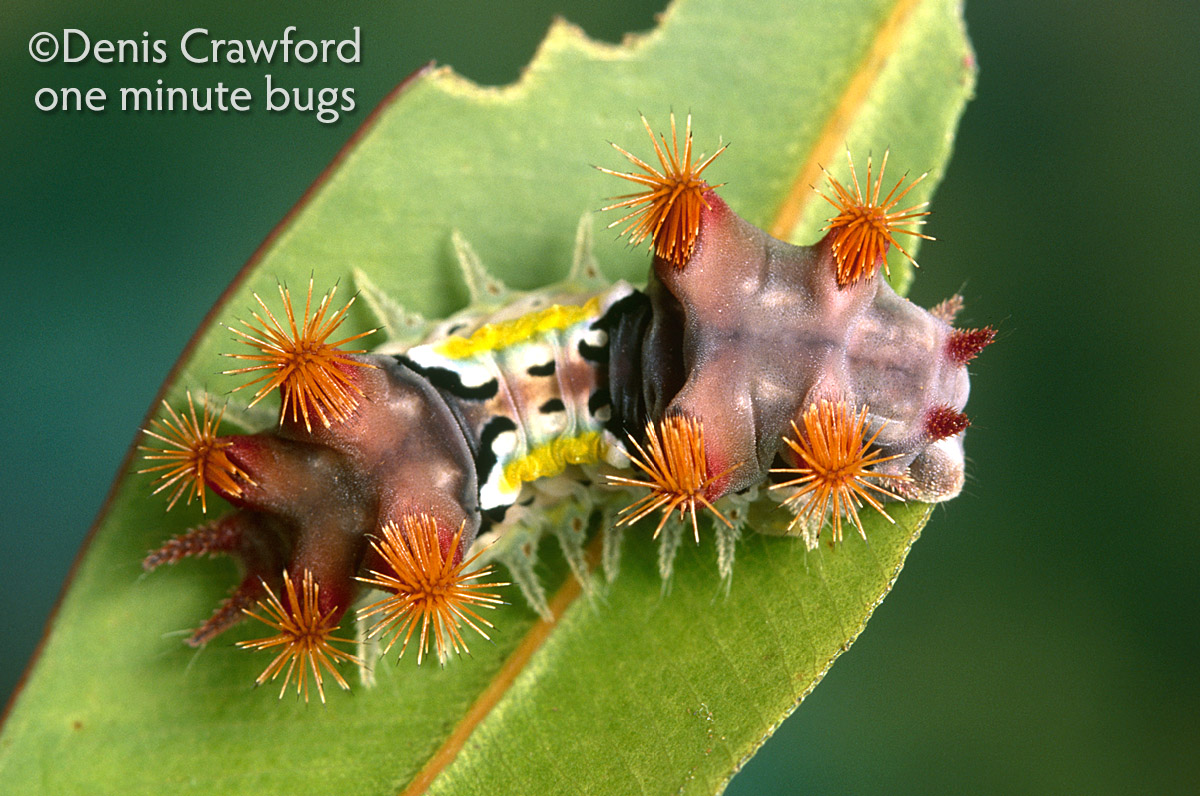It’s early autumn here in the Grampians in western Victoria which means that it is peak time for some of my favourite caterpillars – cup moth larvae.
Cup moths are found across Australia, and they are members of the moth family Limacodidae. The common name ‘cup moth’ is derived from their cup-like pupae (pictured below). There are more than 100 species found in Australia, in about 25 genera. Larvae have varying tastes depending on the genus involved.

The cup moth larvae I find here are in the genus Doratifera and I have only ever seen them feeding on the leaves of Eucalyptus species (although they have been recorded on other plants). The most common species here are the black slug cup moth (Doratifera casta), and the four-spotted cup moth (Doratifera quadriguttata).
There are usually two generations of cup moths per year with numbers of larvae peaking in autumn (now!) and spring. The adult moths are small, nondescript, mottled brown moths with wingspans of about 30 mm. An adult black slug cup moth (Doratifera casta) is pictured below.

Female moths lay their eggs in clusters covered with a dense mat of special scales from the posterior end of the female moth’s abdomen. This covering of scales protects the eggs from desiccation and predators.
When the larvae first hatch from their egg mass, the first couple of instars are gregarious and feed together on a single leaf, eventually skeletonising it. It is only when the larvae grow larger that they separate, and consume whole leaves by themselves, usually only leaving the mid-vein.
Where on earth does that common name black slug cup moth come from? My much thumbed copy of Moths of Australia by the legendary lepidopterist I.F.B. Common reveals “the larvae are slug-like and are the only external-feeding moth larvae that lack abdominal prolegs ….. thoracic legs are usually reduced in size”. Limacodids in North America are generally referred to as ‘slug moths’, but Doratifera casta is the only one lucky enough to endure that title here. I think they are quite nice myself – here’s one in close-up (below).

The larvae of other Doratifera species are much more brightly coloured than D. casta, including my other local species D. quadriguttata (pictured below). What they, and other species, have in common are the rosettes of stinging setae (spines) that expand when the larvae are disturbed. You can clearly see four sets of raised setae in the image below. I.F.B. Common says “they are capable of inflicting a sharp stinging sensation rather like that of nettles”.

There is one other species that I should mention and that is the mottled cup moth (Doratifera vulnerans), the larvae of which are sometimes known as ‘Bondi trams’. These brightly coloured larvae have eight sets of stinging setae – four at each end. I spent ages getting the image below. I tried to provoke it onto raising those stinging setae by poking it with a pencil which had no effect at all! It was only when I gripped it with some forceps that it reacted – perhaps it thought it was about to be eaten by a bird?

I plan to shoot a video over the next week so you can see some cup moth larvae in action. Stay tuned!
Fascinating! wonderful pics. Thanks. Love your work.
Wow! I love ‘One Minute Bugs’. I always learn things I never imagined and yet they are out there all around me, if only I went looking .. Big thank you!
Thanks for helping me identify my caterpillar as Doratifera casta
My pleasure Fiona!